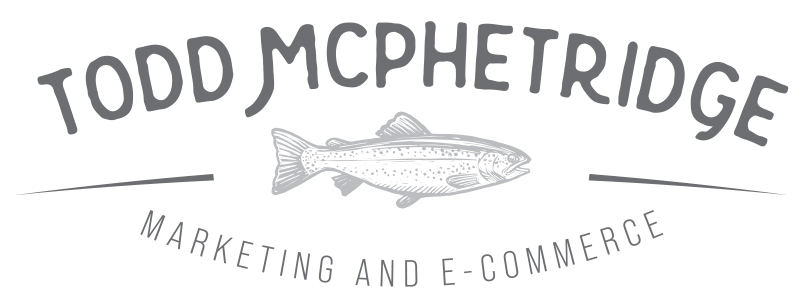DTC growth does not require deeper discounts. It requires an ecommerce offer strategy that makes value obvious, guides selection, and invites sensible upgrades at the right moment. This guide shows ecommerce leaders how to design price justification, bundles, and checkout add-ons, then reinforce the purchase with post-purchase offers that increase perceived value without training customers to wait for codes. Use it to target AOV growth while protecting contribution margin and brand positioning.
What Offer Architecture Means for DTC
Offer architecture is the structured way your store presents value, options, and upgrades across the journey. It is not a banner that shouts percent off. It is the sequence of decisions that turn a curious visitor into a confident buyer who happily spends more because the extra dollars unlock a better outcome. When designed correctly, offer architecture improves conversion rate and lifts AOV without eroding margin.
The AOV Growth Framework
Design the experience in layers. Each layer has one job and a short set of rules.
- Price justification on the PDP. Explain why the product costs what it costs in clear terms. Use materials, origin, durability, cost per use, warranty, and care. If value is obvious, fewer shoppers hunt for codes.
- Job-based bundles. Package complementary items that complete a use case. Price the bundle to protect contribution while delivering a better total outcome than buying a single SKU.
- Checkout add-ons. Offer a small, practical upgrade that improves setup, care, or longevity. Keep selection one click and the copy specific so it feels like a smart decision, not an upsell.
- Post-purchase offers. When the buyer is most engaged, present a relevant accessory, refill, or content upgrade that improves ownership. Use clear timing and frictionless acceptance to add value without pressure.
Layer 1: Price Justification That Reduces Discount Pressure
Most product pages describe features and stop there. High performing DTC stores add a short block that answers the price question directly. This is the foundation of your ecommerce offer strategy.
- Materials and origin. Name the core inputs and where they are made or assembled. Keep it factual and short.
- Performance or durability claim. Provide a measurable statement that a buyer can understand without jargon.
- Cost per use example. Divide price by expected uses or years. Use ordinary math so the logic is believable.
- Care and warranty notes. Show that ownership stays simple and protected. Anxiety goes down when care is clear.
- Outcome statement. Describe the real life improvement the customer will notice after purchase.
Place this block near the CTA, not in a buried tab. The goal is to lift confidence early so shoppers select higher value variants or consider bundles.
Layer 2: Bundles That Solve a Job
Bundles work when they complete a task better than a single item. They fail when they feel like a random pile of SKUs. Use the job to be done as your blueprint, then merchandise the bundle as a peer to the hero product.
- Define the job. For example, “starter kit for first-time users,” “travel bundle,” or “complete care set.” The label tells the buyer what problem is solved.
- Choose components. Include the hero SKU, one essential companion, and one care or protection item. Three to four items is usually enough.
- Write the math. Show bundle price versus buying separately, but avoid language that feels like a sale. Focus on value and convenience.
- Set the price floor. Ensure contribution is safe at projected attach rates and return patterns. Do not undercut the single item in a way that breaks perceived value.
- Placement. Give the bundle its own tile near the hero CTA. Do not hide it under a carousel that few shoppers see.
When bundles are job-based and visible, AOV rises because the buyer purchases the solution rather than just the part.
Layer 3: Checkout Add-Ons That Feel Smart
Checkout add-ons are the cleanest path to AOV growth after a buyer commits. They should reduce friction, protect the product, or upgrade results. Keep the interaction one click and keep the message concrete.
- Pick one or two high-value add-ons. Too many choices stalls momentum. Select the accessory that most buyers will benefit from on day one.
- Use outcome language. “Add for easier cleaning” or “Add to extend lifespan” is stronger than “You might also like.”
- Respect price sensitivity. The add-on should feel small relative to the cart total. Think sensible protection or care, not another hero-priced product.
- Maintain speed. Add without page reloads. Show the cart delta clearly and keep the path to pay short.
- Protect margin. Avoid discounting the add-on. The value is convenience, not a code.
Layer 4: Post-Purchase Offers That Strengthen Ownership
The moment after checkout is an opportunity to increase perceived value and lifetime revenue. The shopper believes in the product and is thinking about first use. Meet that mindset with a useful upgrade.
- Offer timing. Present a single offer on the confirmation page or in the confirmation email. Keep it relevant and brief.
- Offer type. Refills, extended care items, a case or stand, or a content upgrade such as a how-to guide. Choose one that fits the product’s early-life needs.
- Frictionless acceptance. One click to add the item to the existing order if possible. Otherwise provide a short path back to checkout with the item preselected.
- Expectation setting. Confirm delivery timing and explain how the add-on improves the first week of ownership.
Post-purchase success is about improving the outcome the buyer already wanted. It is not a second attempt at a discount. Done well, it raises AOV and reduces returns because owners have what they need to succeed.
Offer Copy That Converts Without Codes
Words do the heavy lifting in this architecture. Use simple sentences and outcome-driven labels. Avoid hype. Practical clarity converts and protects brand trust.
- Outcome first. Lead with the benefit the buyer will notice.
- Concrete proof. Use numbers, materials, or standards to back claims.
- Plain language. Skip buzzwords. Write like a human who has used the product.
- Short blocks. Alternate quick paragraphs with bullets so mobile readers can scan and decide.
Merchandising Rules That Keep AOV Rising
Great ideas fail without practical guardrails. Align offer design with inventory, pricing, and onsite real estate.
- Inventory sanity. Do not feature add-ons that are often out of stock. Substitute equivalents proactively.
- Variant clarity. For bundles that include size or color choices, preselect the most common option and allow easy changes.
- Cross-category logic. Promote accessories that match the hero SKU’s use case. Random grids create confusion and lower trust.
- Prominence without clutter. Show bundles and add-ons near the CTA and in the cart. Avoid popups that obscure the main action.
Measurement: How to Prove AOV Growth Without Discounts
Track impact with a small set of numbers that leadership can read quickly.
- Bundle attach rate. Percentage of orders that include a job-based bundle. Compare to baseline single-SKU orders.
- Add-on attach rate. Percentage of orders that include the selected add-on. Measure by product and by traffic source.
- AOV by entry intent. PDP, comparison, and content entry often behave differently. Report AOV lift by entry path to guide routing.
- Contribution margin by order type. Confirm that higher AOV does not come from hidden costs or higher return rates.
- Return rate for bundled orders. Bundles that truly complete the job should lower returns over time.
- Post-purchase offer take rate. Percentage of buyers who accept the confirmation-stage offer and the incremental margin added.
Checklist: Price Justification Module
- Two-line statement near the CTA that explains price with materials, origin, or standards.
- One measurable performance or durability claim in plain language.
- Cost per use example based on realistic frequency.
- Care and warranty notes that reduce ownership anxiety.
- Short outcome statement that ties features to real life benefits.
Checklist: Job-Based Bundles
- Bundle labeled by job to be done and placed near the hero CTA.
- Three to four items that create a complete solution.
- Clear math versus buying separately, presented as value and convenience.
- Contribution margin floor validated at expected attach rate.
- Variant defaults chosen to reduce friction on first selection.
Checklist: Checkout Add-Ons
- One or two high-utility add-ons only. No clutter.
- Outcome-based copy that states the reason to add in a few words.
- One click acceptance without leaving the flow. Cart delta visible.
- Price sized as a sensible fraction of cart total.
- Accurate inventory and shipping expectations.
Checklist: Post-Purchase Offers
- Single, relevant offer on confirmation page or in confirmation email.
- Offer type enhances early ownership or long-term care.
- One click accept where supported. Otherwise a short, prefilled path back to checkout.
- Clear message about delivery, usage, and value.
- Tracking of take rate and incremental margin added.
Scenario Playbook for DTC Teams
Scenario 1: AOV is flat, conversion is healthy
Shoppers are buying but not upgrading. Add a visible job-based bundle tile beside the hero CTA and test outcome-focused copy. Introduce a single add-on at checkout that removes a common friction in setup or care. Expect a lift in AOV with minimal impact on conversion.
Scenario 2: Bundles exist but attach rate is low
Bundles may be buried or framed as a sale. Relabel them by job to be done, place them near the CTA, and tighten the component list to essentials. Replace generic copy with a concrete outcome statement. Validate that the bundle price respects contribution floors.
Scenario 3: Add-ons slow checkout
Too many choices or clunky interactions are adding friction. Limit to one or two options and keep acceptance one click. If adoption remains low, rewrite copy to state the benefit in five words or fewer and confirm visibility on mobile.
Scenario 4: Post-purchase offers feel like pressure
Reduce frequency to a single, highly relevant offer and clarify how it improves the first week of ownership. Remove aggressive countdowns and align the offer with what buyers most often realize they still need after unboxing.
Creative Guidelines That Support Architecture
Offer design only works if creative reinforces the same story. Align ad concepts and onsite messages.
- Prospecting. Lead with problem and outcome. Introduce the job-based bundle in a simple visual that shows what is included.
- Remarketing. Feature the price justification block in the first mobile screen and emphasize convenience or care upgrades.
- Email and SMS. Use short, educational notes that explain why the bundle or add-on improves results. Avoid urgency unless tied to inventory reality.
Team Roles That Keep It Moving
- Merchandising. Own the job definitions, component selection, and pricing floors for bundles and add-ons.
- UX. Place the modules where buyers decide. Ensure fast load and readable text on mobile.
- Creative. Produce concise visuals that show the completed job and the add-on outcome.
- Analytics. Publish attach rates, AOV by entry, and contribution impact for leadership.
Common Pitfalls and Simple Fixes
- Random bundle components. Fix by mapping every item to the job and removing extras.
- Hidden price justification. Fix by moving the block near the CTA and shortening the copy.
- Overloaded checkout. Fix by limiting add-ons to one or two with outcome-first labels.
- Discount leakage. Fix by avoiding codes in architecture modules and focusing on value and care.
- Unmeasured impact. Fix by adding attach rates and AOV by entry to the operating scorecard.
Get an Offer Architecture Review
If you want to grow average order value without codes, request a focused review. I will evaluate price justification on your PDPs, map job-based bundles, select high-utility checkout add-ons, and recommend post-purchase offers that lift AOV while protecting contribution. Send your current attach rates, AOV by entry, and top SKUs. I will return a practical plan you can ship quickly. Reach out today if you're looking for a DTC Consultant.

















